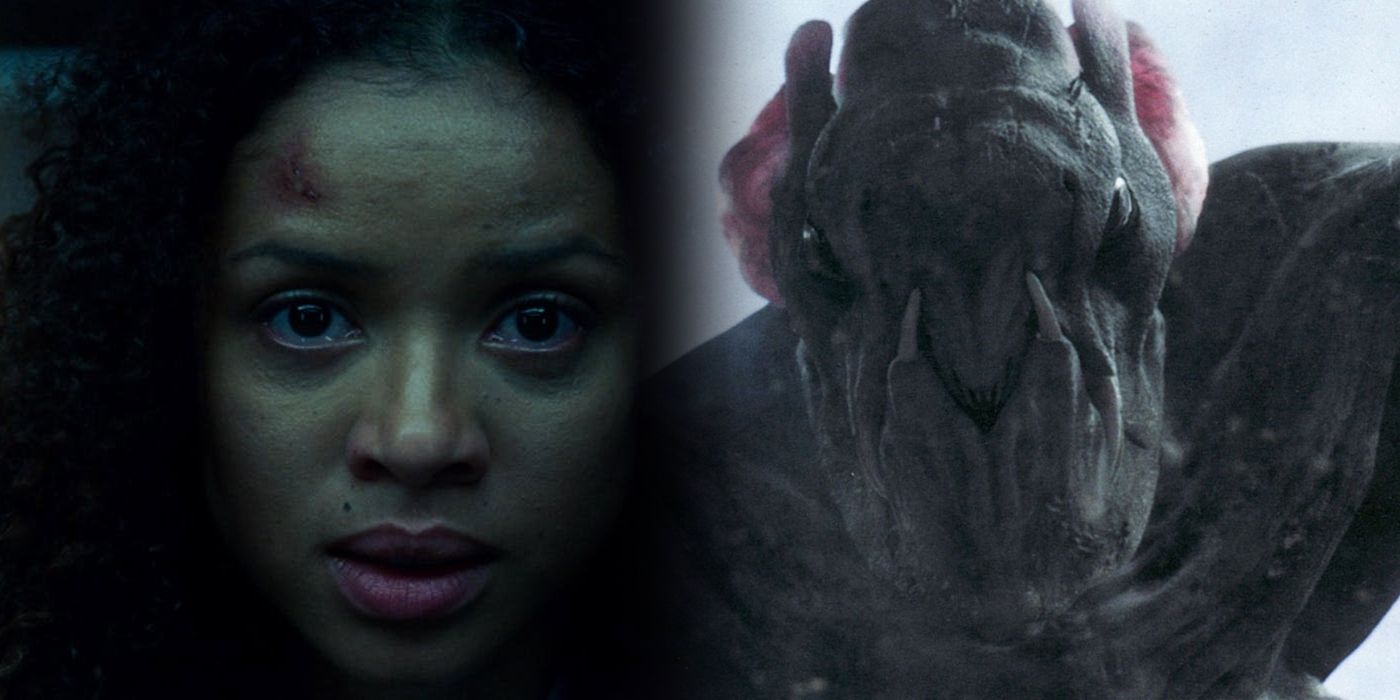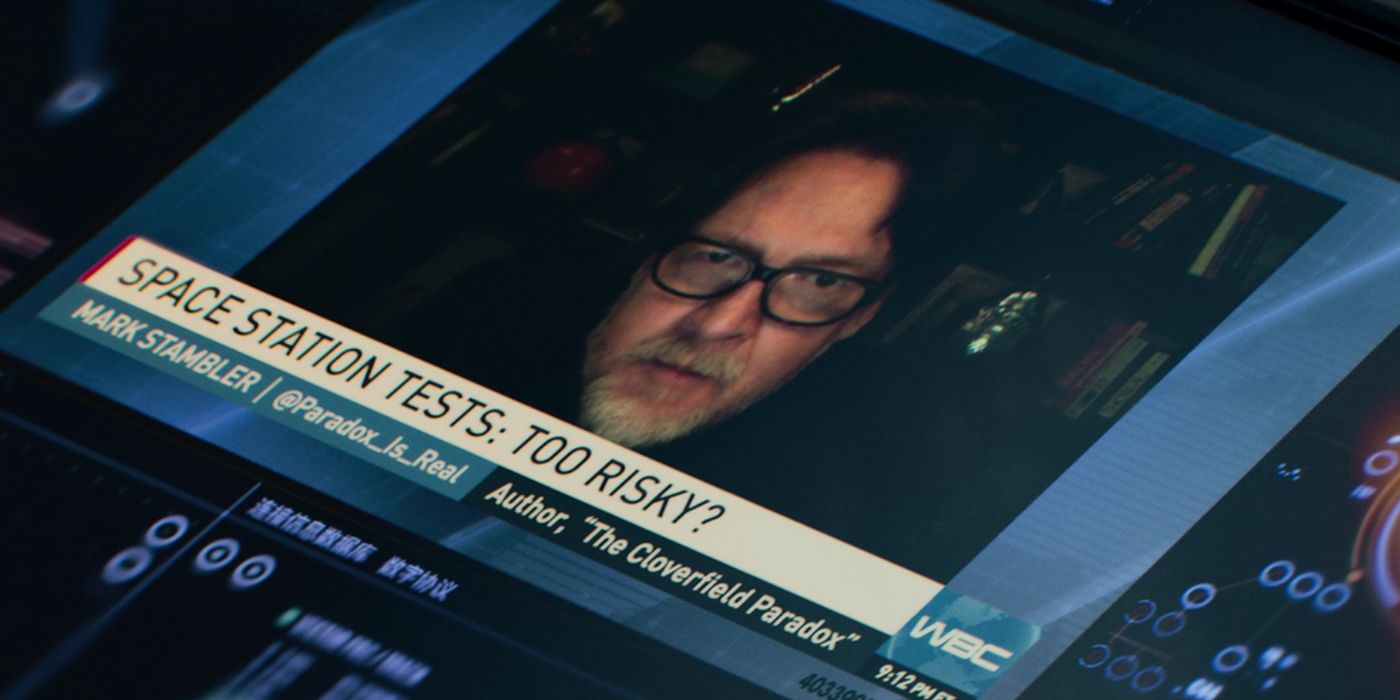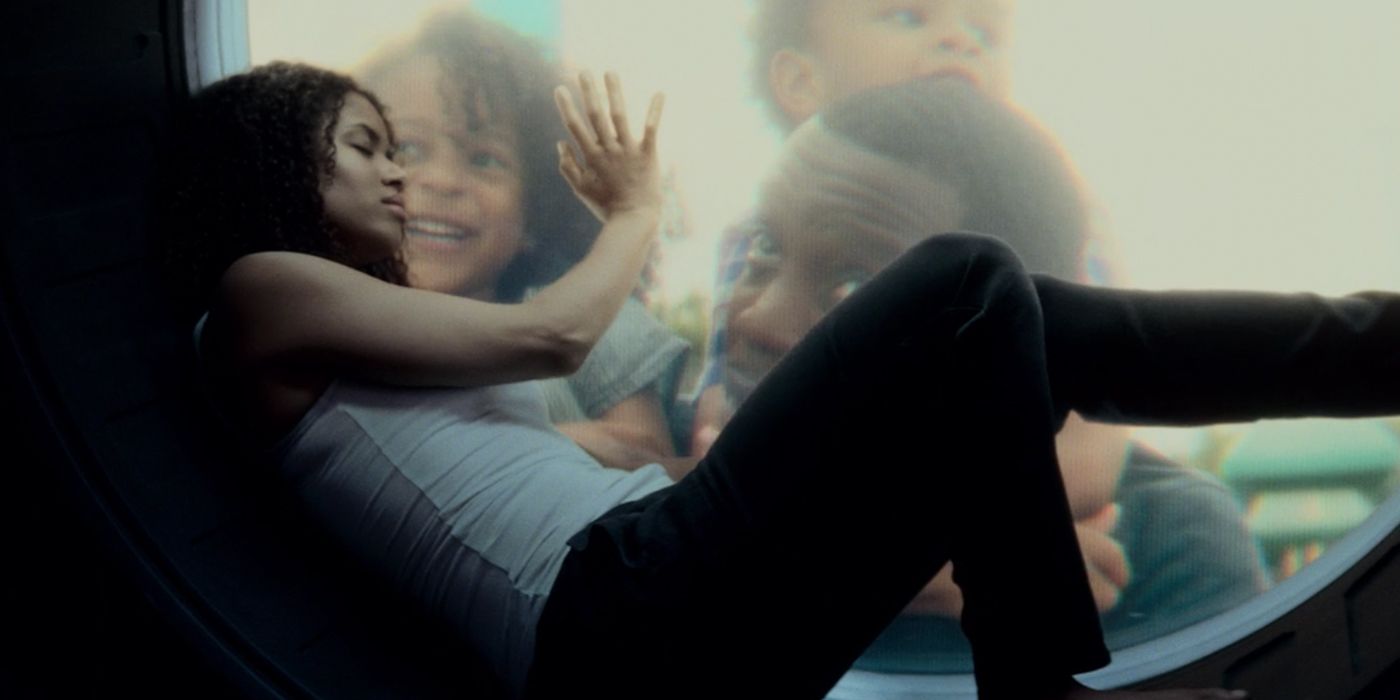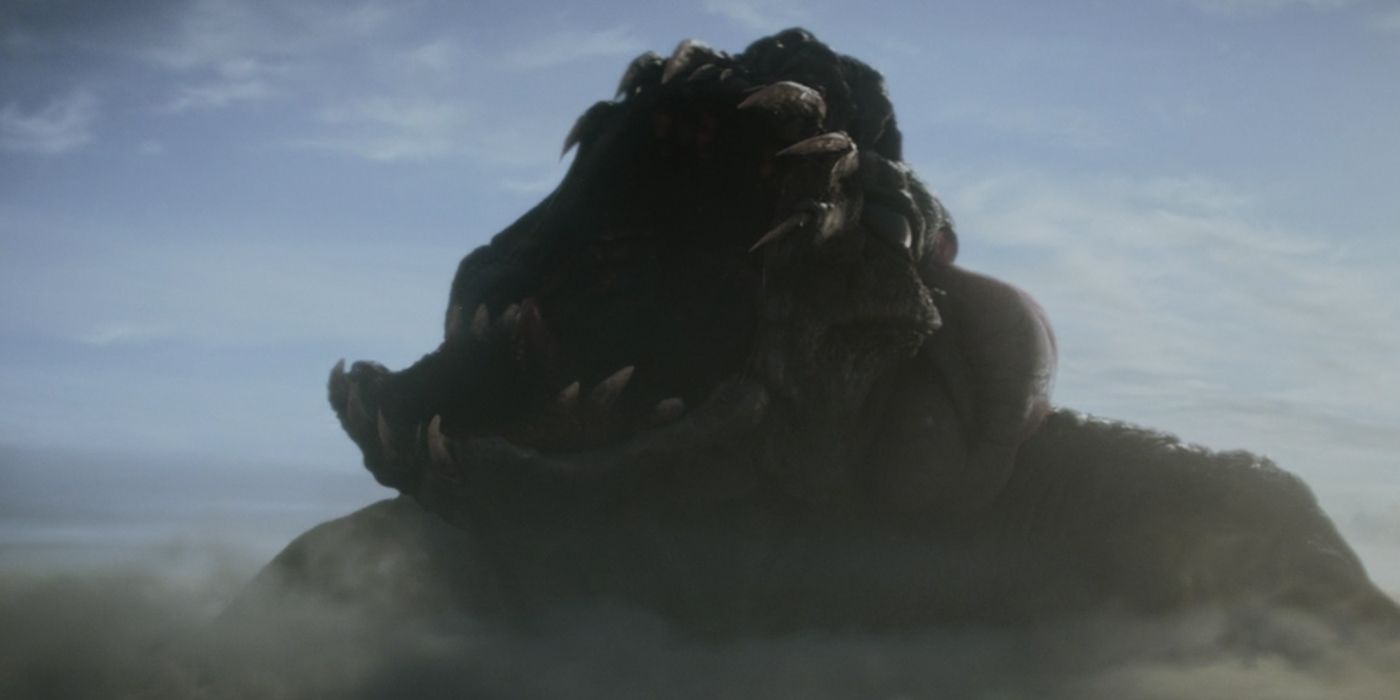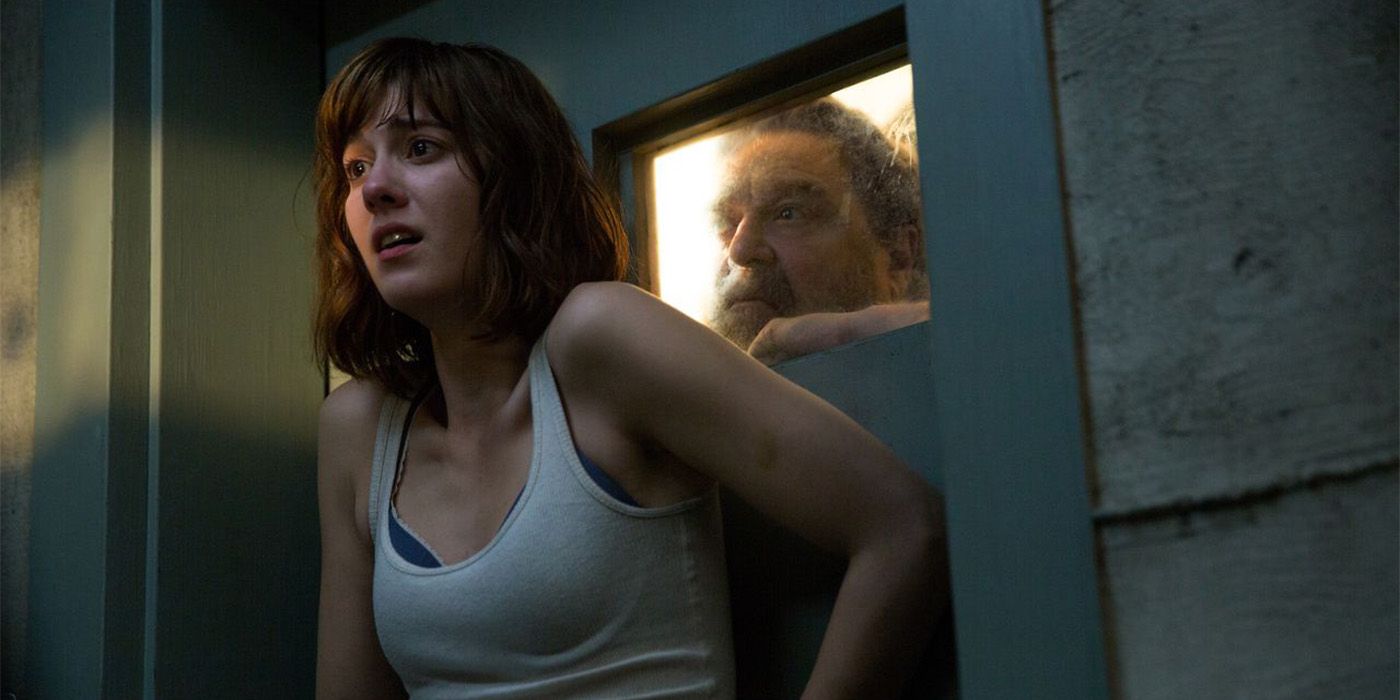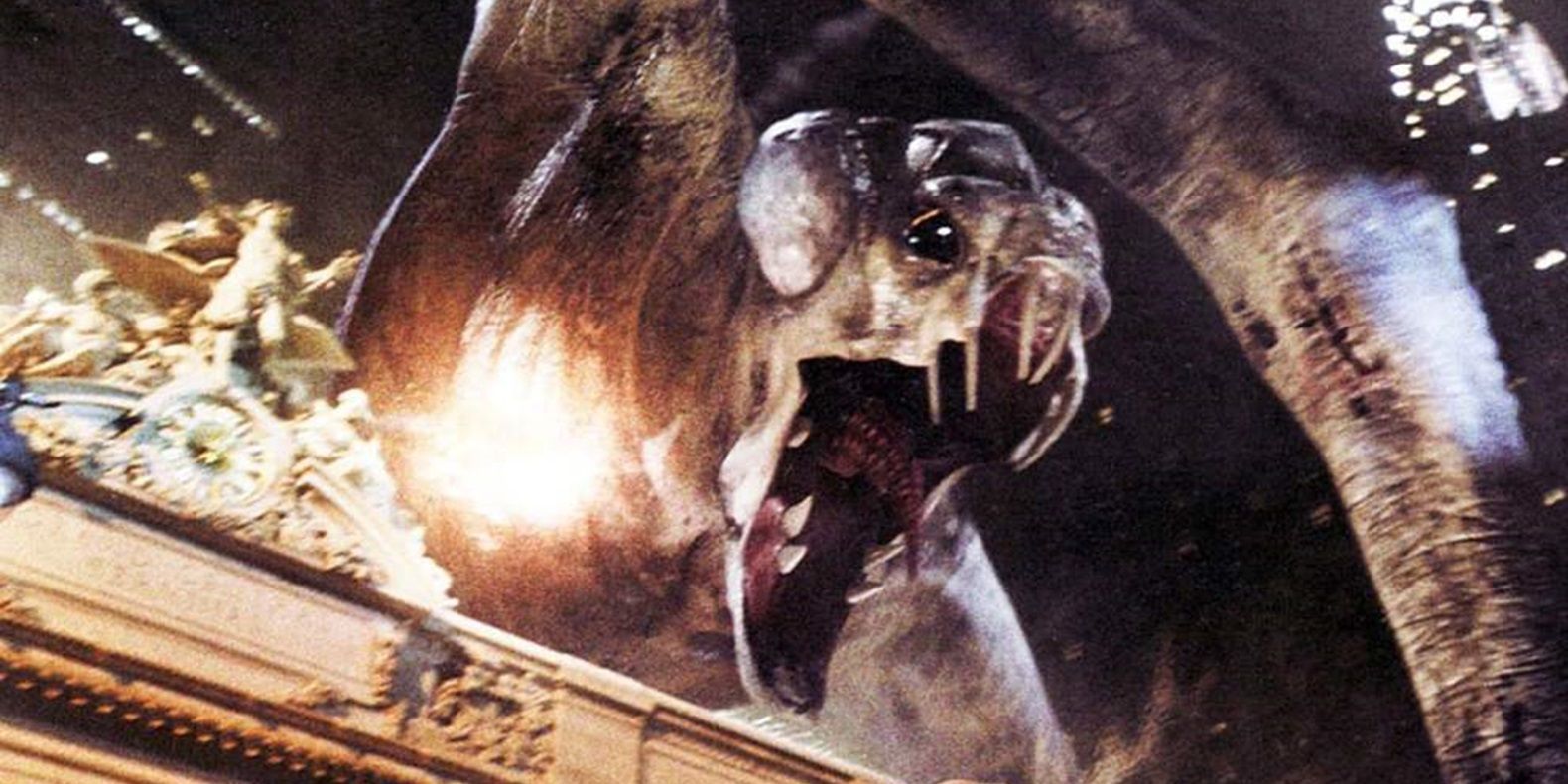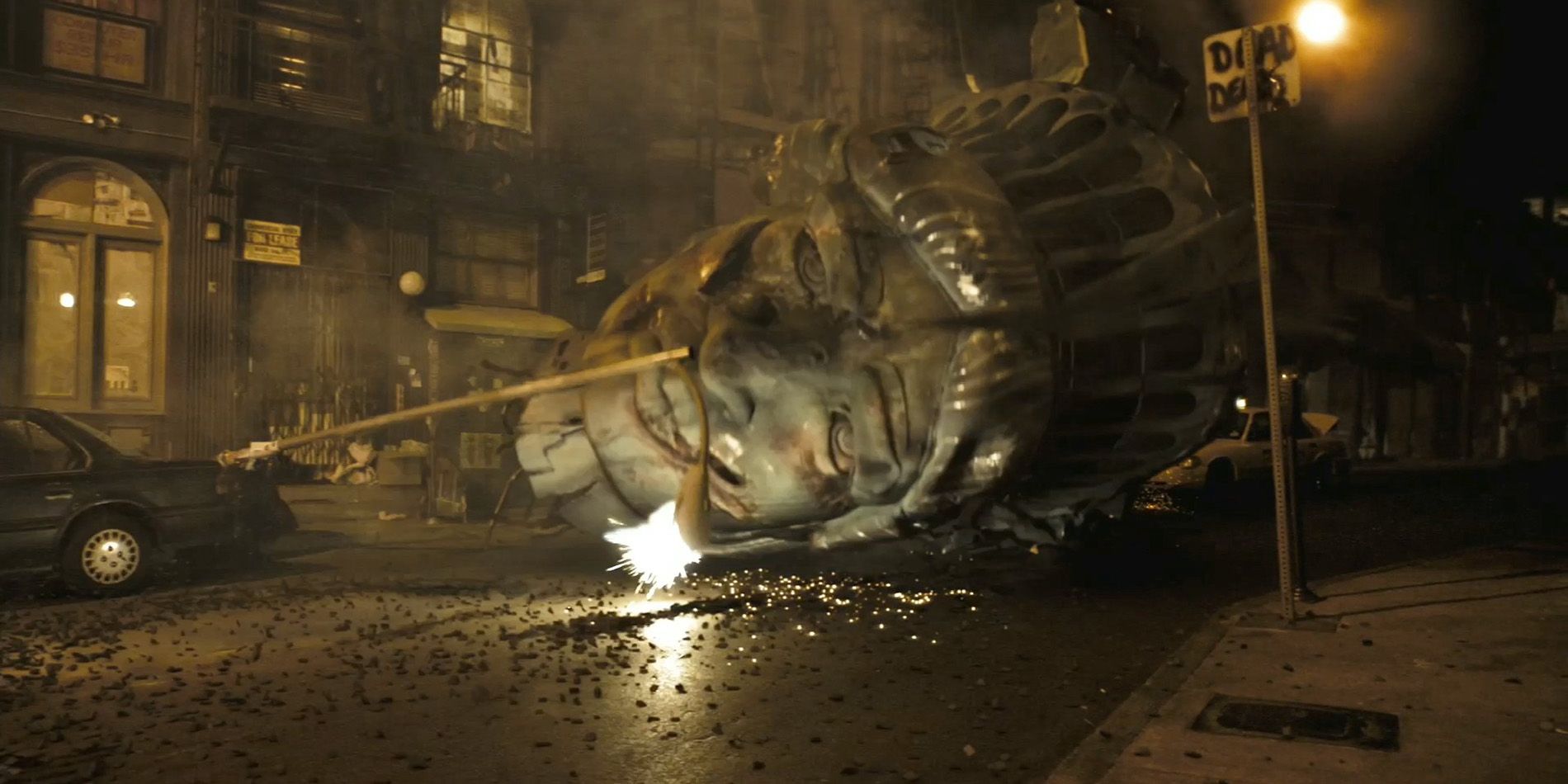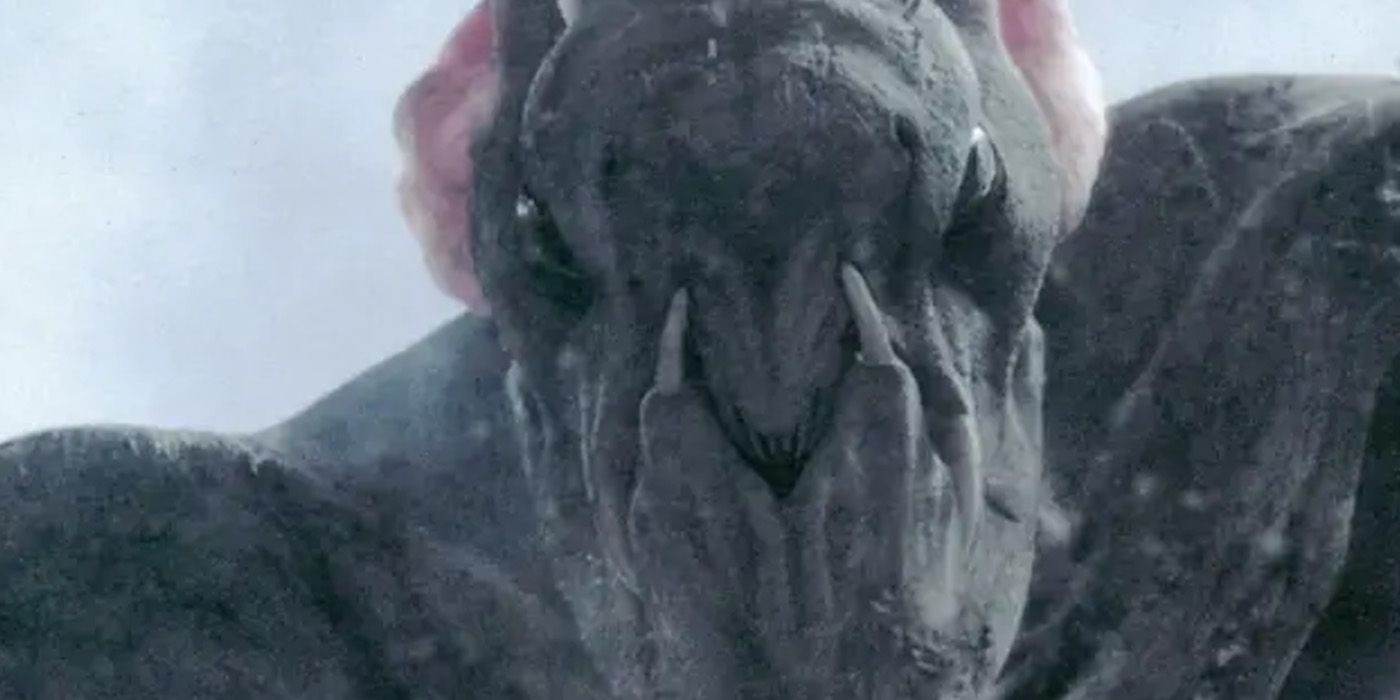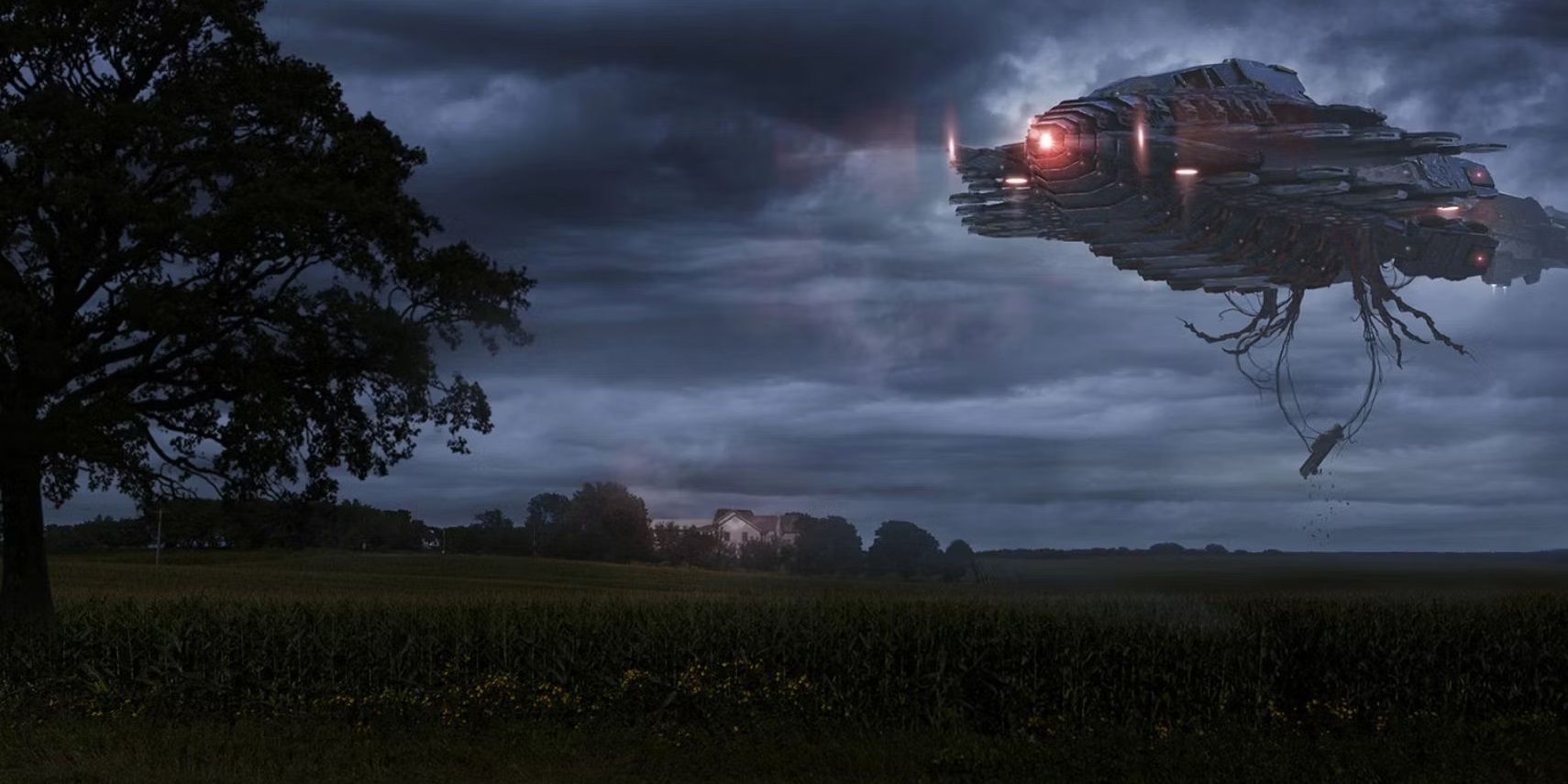Summary
- The Cloverfield movies are unpredictable, connected, and beloved by fans for their unique storytelling and connections between each installment.
- The Cloverfield Paradox introduces a reality-warping event that unifies the franchise, offering a deeper understanding of the connections between the movies.
- The Cloverfield franchise explores cosmic horror and the impact of a singular event across different dimensions and timelines, resulting in giant monsters dominating Earth's future.
The Cloverfield timeline cements it as one of the most unusual movie franchises out there. The 2008 Cloverfield movie kicks the franchise off with a found-footage version of a monster movie. Despite its success, there was no word of a sequel until the first trailer for 10 Cloverfield Lane dropped and confirmed its connection. This was then followed by the third movie The Cloverfield Paradox, adding a little more connection between the movies beyond just the titles. While "Cloverfield" is in each movie title none of the sequels were promoted as sequels, and they were simply marketed as standalone films.
As a franchise, Cloverfield is nothing if not unpredictable, which is what many fans find so endearing. The Cloverfield Paradox offers some interesting connections to the previous films. Through alternate dimensions, time travel, and the titular phenomenon of The Cloverfield Paradox, the three movies may actually be more connected than anyone previously thought. Watching the Cloverfield movies in order isn't as hard as it first appears, and neither is deciphering the Cloverfield timeline.
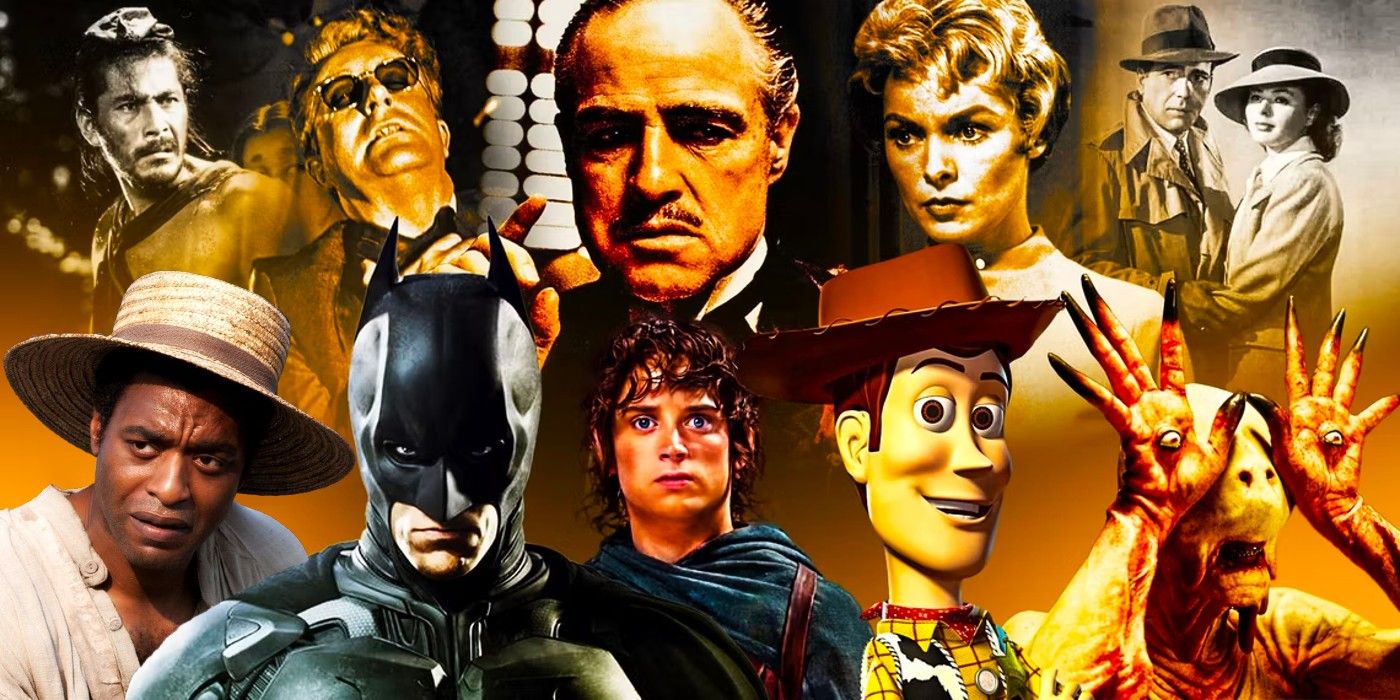
The 55 Best Movies Of All Time
Screen Rant breaks down the best movies of all time, from old classics to modern masterpieces across multiple genres of cinema.What Is The Cloverfield Paradox?
Since Cloverfield, each movie in the Cloverfield timeline started life as a stand-alone story, with the Cloverfield moniker added later for them to be brought into the franchise fold. There isn't necessarily a right way to watch the Cloverfield movies in order. Each movie tells its own isolated story, and what connects them is the root cause of the specific weirdness, be it the Kaiju in Cloverfield or the arrival of genuine aliens at the end of 10 Cloverfield Lane. The Cloverfield Paradox then theoretically unifies the disparate situations of the various movies with its namesake reality-warping event, with the premise leaving plenty of room for more connected-but-not Cloverfield movies.
The Cloverfield Paradox explains that the franchise is, at its core, rooted in Cosmic Horror. A single plot element links all three Cloverfield movies, and it feels more like something from Event Horizon than the Godzilla-esque Kaiju action of Cloverfield. In an early scene in The Cloverfield Paradox, author Mark Stambler (who shares a surname with Howard, John Goodman's character in 10 Cloverfield Lane) appears on a television, warning of the titular Cloverfield Paradox. The character explains that the particle accelerator science experiment in outer space has the potential to destroy the very fabric of space-time.
In the Cloverfield continuity, a space-time collapse is explained as having the potential to cause bleeds between alternate universes — changing the past, present, and future, completely upending reality itself. Sure enough, the experiment and effort to create a new energy source to end the current oil crisis on Earth sends the Cloverfield Station into another dimension, where normal rules of nature no longer apply. The main plot, set on the Cloverfield space station, has the crew fighting a losing battle against an alternate dimension to which they do not belong, victims of warped reality struggling to right itself.
However, that's only part of the story. On Earth, The Cloverfield Paradox has caused widespread destruction in the form of at least two gigantic Cloverfield monsters, witnessed by Michael (Roger Davies). The first, obscured by a thick cloud of smoke and ash, vaguely resembles the iconic monster from the original Cloverfield. In the final shot of the film, however, a super-sized version of that legendary beast makes a terrifying and glorious appearance above the clouds, indicating that Cloverfield and The Cloverfield Paradox do share more than just a franchise.
The Cloverfield Paradox Is A Cloverfield Prequel And Sequel
When Stambler talks about The Cloverfield Paradox, he is diving deep into quantum physics and unknown fields of science that may not even be theoretically possible. It's Stambler's paradox that ultimately links Cloverfield to 10 Cloverfield Lane, as well as connecting both to The Cloverfield Paradox itself. To that end, The Cloverfield Paradox is both a prequel and a sequel to the original Cloverfield. It's set in the future in 2028, but its energy experiment events directly influence the past, rippling across infinite dimensions and completely obliterating the conventional understanding of time as a linear construct.
The particle accelerator causes distortions in time and space, bringing creatures from alternate dimensions, including the original Cloverfield monster, to this reality but at different points in time; chronology is not linear but a flat surface that can fold in on itself, with all possible points on a timeline existing simultaneously. The events of 2028 in The Cloverfield Paradox caused the events of Cloverfield, which then ripple through time and space in another dimension before taking effect at the moment of the modern-day incident. It's a spatially-locked time travel mind game.
Because the logic is only delivered in theory by Stambler, it's hard to draw resolute conclusions about how the Cloverfield movies' timeline is rewritten. It's also worth noting that the science is deliberately a little confusing — this is Cosmic Horror inspired by movies like Event Horizon and 2001: A Space Odyssey, after all. Fear of the unknown is an important thematic element of the Cloverfield movies. While some viewers might wish for an explanation that makes everything click into place, this would ultimately ruin the suspense and position the sci-fi franchise a little too close to the science and a little too far from the fiction.
2028 Is Now Dominated By Giant Monsters
The events of The Cloverfield Paradox caused a butterfly effect across spacetime that had significant ramifications, not only in Stambler's reality but in those adjacent to it too. The events of Cloverfield and 10 Cloverfield Lane are a direct result. History has been significantly altered, with the monsters in the preceding two movies arriving because of what happens in 2028. The third Cloverfield explained that this creates a causal feedback loop of sorts.
The horrifying creatures that started appearing earlier in the timeline spread and the interim decades were rewritten, which in turn means that Earth in the 2028 "present" of The Cloverfield Paradox is now dominated by multiple Cloverfield monster species. Giant is the optimum word for the Cloverfield Paradox Kaiju too — the creature at the end is tall enough for its shoulders to stick out above the clouds, making it significantly larger than what was seen in the 2008 film despite the similar design.
While this means the watching order can be a little confusing since the franchise technically both starts and ends with The Cloverfield Paradox, it does highlight that interdimensional travel is not neat, clean, and deliberate — it's violent, unpredictable, and often accidental. The Cloverfield Creatures are ripped out of their own time and space, which is folding over on itself like a wormhole. They're then brought into the setting of The Cloverfield Paradox, a powder keg of human conflict that is not prepared for the sudden appearance of a fully grown Godzilla-esque monster, among the potentially countless other monstrosities that are utterly decimating the Earth.
How Does 10 Cloverfield Lane Fit In?
Cloverfield and Paradox link together easily enough thanks to the monster, but 10 Cloverfield Lane doesn't fit in quite as immediately — and some connections don't make total sense. The aforementioned surname, Stambler, shared between the prophetic author in The Cloverfield Paradox and the paranoid survivalist in 10 Cloverfield Lane feels more coincidence than anything else.
The same appears to be true of the presence of two bunkers. While Michael does wind up hiding out in a fallout bunker near the end of Paradox, and he does live in a similar location to where Howard's doomsday shelter was based in the previous film, they're clearly different locations (although it's possible that's a result of the interdimensional bleed and the "Peter" whose bunker Michael visits is an alt-universe Howard). Therefore, how the Cloverfield movies connect is difficult to explain in this regard.
However, a new Cloverfield film can still clarify 2016's 10 Cloverfield Lane's place in the timeline a little better. It's also clearly connected despite the links being a little less obvious than those between Cloverfield and Paradox. It can be inferred that the sudden alien invasion in Lane is a direct result of the interdimensional shenanigans caused by the particle accelerator in Paradox, and that the alien creatures are simply unseen during the events of 10 Cloverfield Lane. This also keeps it thematically in keeping with the franchise and its sense that humanity is always far closer to reality-shattering danger than it realizes.
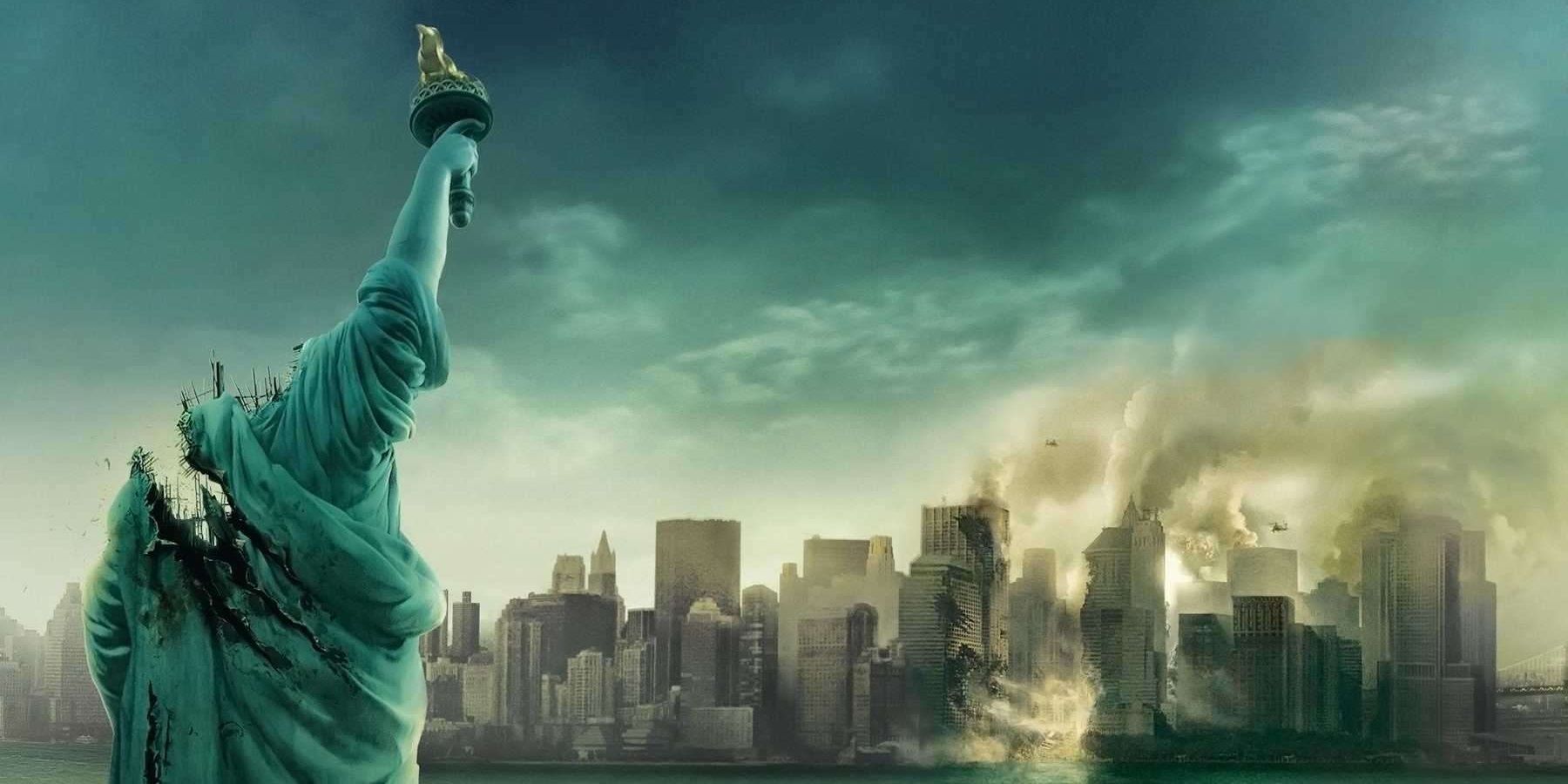
Where To Watch Cloverfield Movies
Cloverfield, 10 Cloverfield Lane, and The Cloverfield Paradox feature loose in-universe connections, but their streaming links are even more remote.It's All Connected
The Cloverfield movies are a film saga like few others, in that the audience's perception of the series as a whole changes with each entry. The original Cloverfield is a straightforward monster flick with a found footage twist. Then, 10 Cloverfield Lane establishes the series as a Twilight Zone-esque anthology series comprising standalone stories. 2018's The Cloverfield Paradox then flips the franchise on its head once more, while telling its own, self-contained tale of cross-dimensional rifts, managing to unify the trilogy in a creative and provocative way.
To casual viewers, the Cloverfield movies can be viewed as separate entities. Even The Cloverfield Paradox, for all its multiverse-building, is still its own beast. However, those invested in Cloverfield as a franchise can understand it as a story about a specific event and its ramifications. This is the most human element of the Cloverfield franchise by far, since the impact of the event has been explored from the perspective of clued-up 2028 scientists in The Cloverfield Paradox, unaware 2008 party-goers in Cloverfield, and 2010s doomsday-prepper types who think they understand but really don't at all in 10 Cloverfield Lane.
What's The Future Of The Cloverfield Franchise?
Despite the huge gaps between the Cloverfield movies, the franchise lives on, even in 2023, as there is a new Cloverfield film on the horizon. Under Paramount's guiding hands, Cloverfield 4 is currently in development. The monster movie franchise has certainly had its ups and downs in terms of viewership and critical acclaim. The first Cloverfield movie is certified "fresh" on Rotten Tomatoes, though the found-footage film barely scraped by with its audience score. 10 Cloverfield Lane outperformed its predecessor by a long shot, but The Cloverfield Paradox, on the other hand, was released on Netflix and earned negative reviews.
Director Babak Anvari (Under the Shadow, I Came By, Wounds) will direct the fourquel. Screenwriter Joe Barton (The Ritual, The Lazarus Project, Encounter) will be penning the script. In addition, famed director J.J. Abrams will be producing Cloverfield 4 through Bad Robot, with Hannah Minghella and John Cohen. In terms of producers, Bryan Burk, Matt Reeves (who directed the first movie), and Drew Goddard are all signed on to the project as executive producers.
There's little knowledge out there about how the new film will connect with the rest of the Cloverfield mythos, but there are rumors that it will be a direct sequel to the original Cloverfield movie. So far, there have been no cast announcements, nor is there a Cloverfield 4/Cloverfield 2 (depending on the final title) release date. Hopefully, Cloverfield 4 will be able to redeem The Cloverfield Paradox, as despite being the link that connects Cloverfield to 10 Cloverfield Lane, it's still arguably the weakest movie in the franchise.
How Cloverfield Became An Anthology Franchise
Given the rather loose nature of the Cloverfield movies' timelines, it might not be surprising to learn that it was not originally envisioned to be a connected universe of movies. In fact, had the original plans gone through, there might have been a much more conventional franchise following the first movie. In a recent interview with Matt Reeves (via Syfy), the director discussed original plans for making a sequel, "I think we were thinking that the three of us - me, J.J. and Drew - would do another one right then."
However, given the fast-paced careers each of those three men had following the success of Cloverfield, Reeves explained that they got pulled in different directions. Though Reeves spoke of an idea for Cloverfield 4 as a virus movie, he also discussed how much he enjoys that it has evolved into an anthology series of movies. He explains that 10 Cloverfield Lane "opened up this whole other lane that was really, really exciting. For me, it was always exciting to see what other filmmakers do." Though it was not the original plan, this new approach to Cloverfield seems to excite fans as well as they wait for the next installment.
How To Watch The Cloverfield Movies In Order
As the Cloverfield franchise is an anthology series, meaning that they don't directly follow the events of their predecessors and are completely different stories with different characters, viewers can ultimately dip into any of them without having seen the previous films. The Cloverfield Paradox could be watched first as a cosmic horror flick just as the 2008 movie could be watched as a standalone found-footage movie. The chronological order of the Cloverfield movies isn't necessarily the order in which they have to be watched. However, without having watched them in order of release, viewers could be missing out on some jaw-dropping moments. Here's where to watch the Cloverfield movies:
- Cloverfield - Stream on Paramount+
- 10 Cloverfield Lane - Stream on Paramount+
- The Cloverfield Paradox - Stream on Netflix
The final shot of The Cloverfield Paradox, in which Clover leaps out of the clouds, is undoubtedly shocking on its own. However, if The Cloverfield Paradox is the first Cloverfield movie viewers watch, that shot won't be as exciting without the context of the 2008 movie. Though The Cloverfield Paradox is both a prequel and a sequel and can be viewed as a standalone movie, the experience will be most satisfying after watching Cloverfield first. With 10 Cloverfield Lane being a great, standalone, isolated thriller, the sequel can be watched first or last and it doesn't really matter, and the original Cloverfield monster doesn't even appear.

